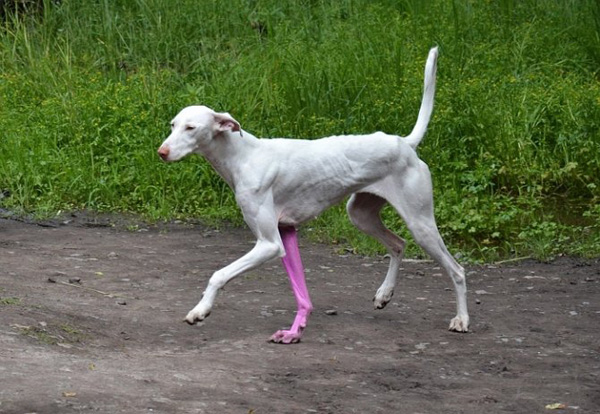Lafayette Anticipation associate curator Anna Colin talks to artist Tyler Coburn about Ergonomic Futures, a speculative project engaged with art, design, science, anthropology and writing. In this interview, Coburn discusses the research, production process and network of collaborators of a multilayered project ultimately concerned with the futures of humankind. Anna Colin: When one comes across your museum seats Ergonomic Futures (2016—) in contemporary art exhibitions—and soon in natural history, fine art, and anthropology museums—they look… [read more »]
Where are the Masterpieces of Our Time?
If the notion of the masterpiece pertains to a category of modernist art, then we could certify that in our postmodernity there is no longer a place for them. Historically, one of the first tasks of so-called masterpieces has been to identify a period. This quality of representing the spirit of the time, the zeitgeist,sucked them into higher values on the market, although on occasions their entry into the patrimony of humanity protected them from commercial ups and downs. The question that provides the title for this text is obviously rhetorical, though it interrogates us about those contemporary pieces that possess or acquire a character that represents the zeitgeist. One could carry out a survey amongst professionals and art lovers for examples of these works from the last ten or twenty years. The answers would be a motley assortment. Despite the market trying to inflate the horizon with never-ending promises of the next-big-thing, the durability of these promises is revealed to be ephemeral. However, the market still plays a role, maybe not in the fabrication of masterpieces so much as by raising monuments that aspire to emerge as timeless symbols, at the same time as being representations of historic junctures.
In any consideration of contemporary masterpieces the association with architecture, and the sphere of architects, also ends up being inevitable. Art and architecture. I’m referring to Ai Weiwei with the Olympic stadium in Beijing (2008) (along with Herzog & de Meuron), or more recently the sculpture ArcelorMittal Orbit by Anish Kapoor (also in celebration of the Olympics in London this year). In both instances it’s a case of art in close alliance with capital and power. Now if we established another survey, about the artistic pieces that best represent the current phase of global capitalism, possibly these two would win all the bets. This derives (luckily for us) from the fact that art on its own is incapable, not even with polemics and scandal, of concentrating the attention of the media or the social impact that any masterpiece would claim. Contemporary architecture, or this association of interests between power and capital that I mentioned, does manage, albeit failing on a critical level, as despite their popularity (or populism) these new monuments of cultural spectacle veto their own entry into the pantheon due to their excess and grandiloquence. They don’t serve. It also ends being ironic that both Kapoor and Weiwei have in recent times paid tribute to the Monument to the Third International (1919-1920) by Vladimir Tatlin, the first with his tower in London and the second with Fountain of Light (2007), a personal “version” of Tatlin’s monument but as if it was a huge spider of lights. These pieces converted into spectacle only account for a typical, citational, post-modern style that is of little interest.
Maybe instead of looking in this direction, a more modest type of art could illuminate our inquiry. It is known that the Documenta in Kassel has always been the place where the volatile zeitgeist has had an abode from which to materialise. The accumulated memory of art turns our attention, over and over again to the German rendezvous, and the sediments solidify. The names and works flow in the collective memory. Documenta, quite aside from whether it does or doesn’t produce masterpieces, has always been generous in the elaboration of images that operate as indicators of the zeitgeist. There exists a fairly broad consensus amongst the critics that the work, from the last dOCUMENTA (13) that most aspired to occupy any place of honour, is that of Pierre Huyghe. Untilled (2011-2012) lists in its explanatory sign the following materials: “living entities and inanimate things, made and not made”. Huyghe, a big name within art, can be more or less gratifying, but this work made of materials, animals and rubbish, has to be taken seriously. It would also be naïve here not to see the market (the sign makes it quite clear), however, the difference with respect to the previous examples is notable.
The circulation of images of the no-place indicated by Huyghe amplifies their effect, along with the oral and experiential mythology (who saw the greyhound and who didn´t! or even who saw Huyghe, and who didn’t!). One has to admit with regret that, from the marathon of the dOCUMENTA (13) and the Karlsaue, the installation of Huyghe was left pending. Even so, the circulation of the memories of those who experienced it can be enough; Untilled becomes the work that symbolises the current collapse in to which things have entered. Detritus and composting as metaphors for the spirit of our time, our zeitgeist. The beauty of waste, the no man’s land and abandonment seem to nourish a spirit of decomposition that needs to process, recycle and compost…to become renewed material. We don’t know if it is a masterpiece but Untilled is worthy of entering into the category of non-masterpiece, representing the totality of the world distilling its symptoms of decomposition.
Text previously published at http://www.a-desk.org
Peio Aguirre writes about art, film, music, theory, architecture and politics, amongst other subjects. The genres he works in are the essay and meta-commentary, a hybrid space that fuses disciplines on a higher level of interpretation. He also (occasionally) curates and performs other tasks. He writes on the blog “Crítica y metacomentario” (Criticism and metacommentary).











































































